Greenhouse farming in West Bengal is a type of agriculture where crops are grown in a controlled environment under the protection of a structure, typically made of transparent material.
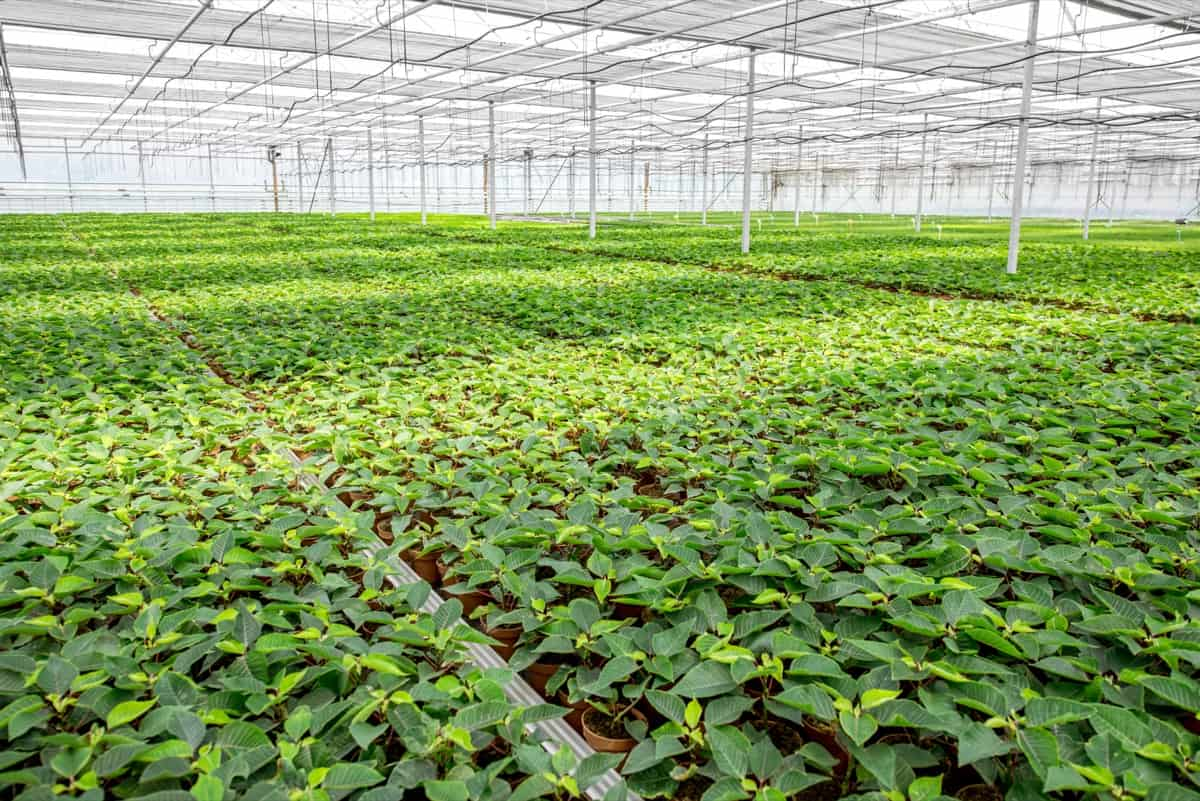
Greenhouse Farming in West Bengal
Greenhouse Farming Areas in West Bengal
In West Bengal, greenhouse farming is practiced mostly in Nadia, Hooghly, 24 Parganas North and South districts, Howrah, East Midnapore, and West Midnapore. The state has about 3 lakh acres under greenhouse cultivation.
Crops Grown Under Greenhouses in West Bengal
- Flowers: Roses, Lilies, Orchids, and Chrysanthemums are popular flowers grown in greenhouses in West Bengal.
- Vegetables: Cucumbers, Tomatoes, Capsicum, Eggplants/Brinjals, leafy vegetables, and Chillies are common vegetables cultivated under greenhouse conditions in West Bengal.
- Fruits: Strawberry, Raspberry, Blackberry, and Blueberry are some of the widely grown fruits in greenhouses located in West Bengal.
Different Types of Greenhouse Farms in West Bengal
- The gutter-connected system is one of the most popular types of greenhouse farms. This type of system is usually used for small to medium-sized greenhouses. The main advantage of this type of system is that it is very easy to set up and maintain. This system can be used for various crops, including Tomatoes, Cucumbers, Peppers, and Eggplants.
- The free-standing system is another popular type of greenhouse farm. This type of system is often used for larger greenhouses. The main advantage of this type of system is that it offers a lot of flexibility in terms of layout and design.
- Closed greenhouse systems are completely sealed off from the outside environment. This allows for greater control over the internal climate but also means more energy is required to maintain the desired conditions. Closed systems are typically used for delicate crops requiring specific growing conditions.
- Open greenhouse systems are not sealed off from the outside environment. This allows for natural ventilation and cooling but also means that conditions inside the greenhouse can be more difficult to control. Open systems are typically used for hardier crops that can tolerate a wider range of conditions.
- Hybrid greenhouse systems are a combination of closed and open systems. They typically have some ventilation or opening that can be controlled to allow for natural ventilation or complete sealing from the outside environment. Hybrid systems offer the benefits of closed and open systems, making them versatile options for many crops.
In case you missed it: District Wise Crop Production in West Bengal: Major Crops in West Bengal
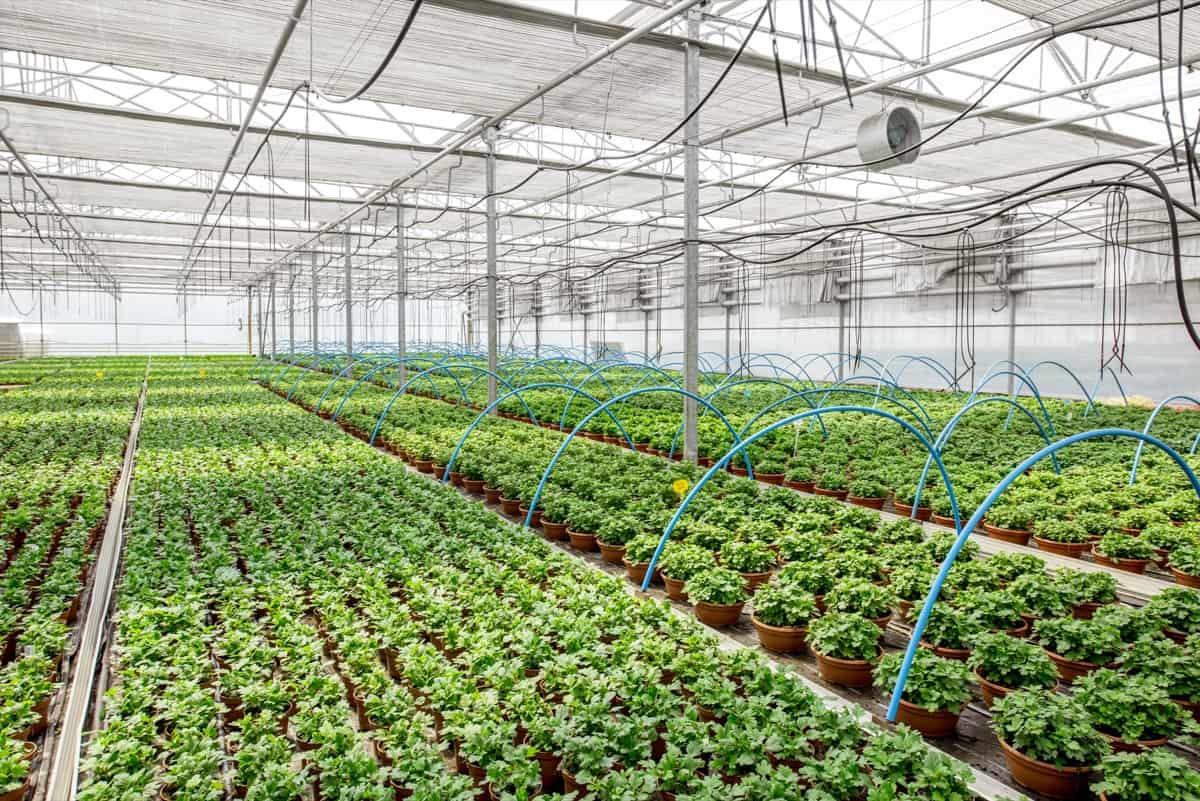
Greenhouse Vegetable Production in West Bengal
West Bengal is the most populous and agricultural state in India. The state has a humid subtropical climate, ample rainfall, and alluvial soils, making it ideal for growing various crops. Greenhouse vegetable production is an important part of the state’s agricultural sector, and West Bengal is home to some of the largest greenhouse farms in India.
Greenhouse farming in West Bengal has grown rapidly in recent years, owing to its many advantages over traditional open-field farming. These include higher yields, better quality produce, year-round production, and protection from extreme weather conditions. Greenhouse farms are also relatively less labor-intensive and require lower water and fertilizer inputs.
Is Greenhouse Farming Profitable in West Bengal
- It is an agriculture system where crops are grown in protected environments. Greenhouses can be used to grow a wide variety of crops year-round and can be adapted to different climates.
- Different factors are important when determining if greenhouse farming is profitable in West Bengal. The cost of setting up a greenhouse, the climate, the type of crop being grown, and the market conditions all play a role in profitability. However, with the right planning and management, greenhouse farming can be profitable in West Bengal.
- Greenhouses can be made out of various materials, but they all share the common goal of trapping heat and light from the sun to create an optimal growing environment for plants. Greenhouse farms can be located near urban areas, making fresh produce more accessible to consumers.
In case you missed it: Poultry Farming in West Bengal, How to Start, Schemes, and Loans
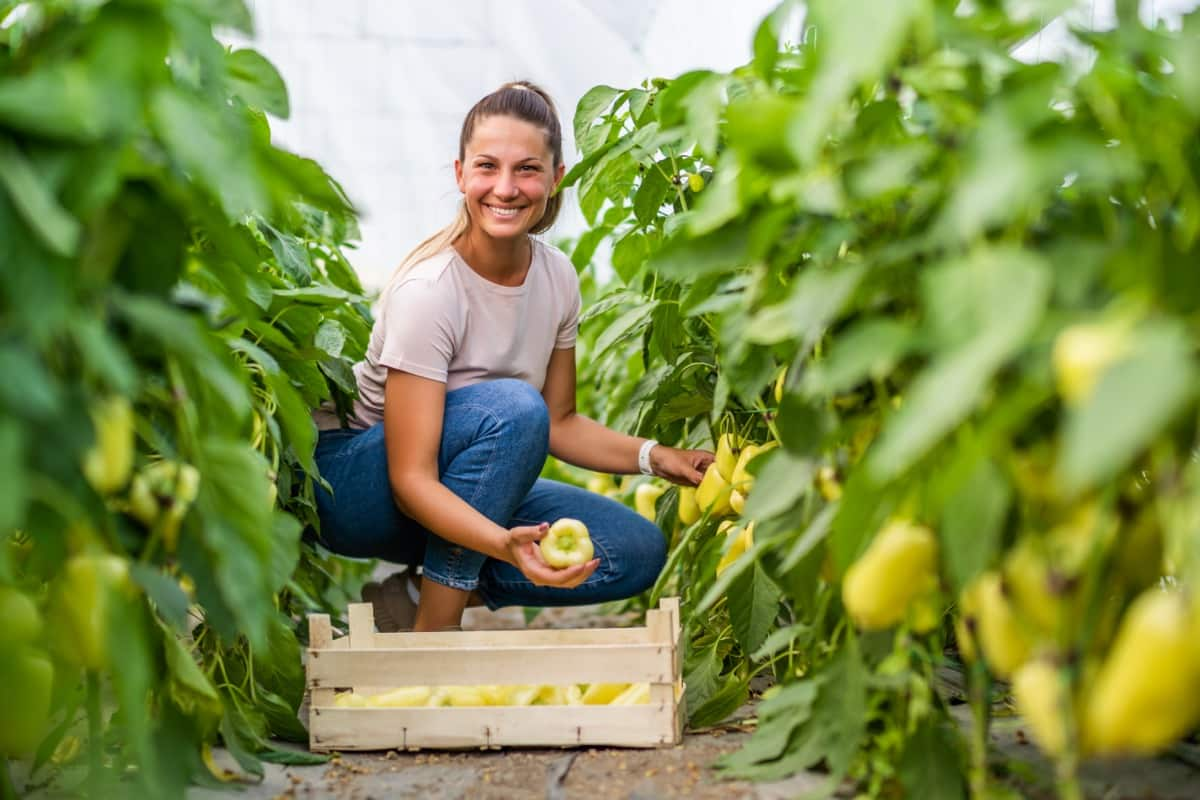
Greenhouse Loans and Subsidies in West Bengal
The Government of West Bengal provides subsidies for setting up greenhouses under the National Mission for Micro Irrigation scheme. Farmers can avail of a subsidy of 50% on the total cost of setting up a greenhouse. In West Bengal, the government offers several subsidy and loan schemes for farmers interested in setting up greenhouses.
The main scheme is the National Horticulture Mission, which provides subsidies for up to 50% of the cost of setting up a greenhouse, with a maximum subsidy of Rs. 1 lakh. Other schemes include the Rashtriya Krishi Vikas Yojana, which offers loans at subsidized interest rates, and the Pradhan Mantri Fasal Bima Yojana provides crop insurance for greenhouse farmers.
Greenhouse Farm Set-Up Cost in West Bengal
The cost of setting up a 1-acre greenhouse in West Bengal will vary depending on the specific location and climate. However, on average, the cost for materials and construction of a basic 1-acre greenhouse is approximately Rs. 10 lakhs to Rs. 15 lakhs. This cost does not include the cost of land or other associated costs such as irrigation, electricity, or labor. Additionally, greenhouses require regular maintenance and repairs, increasing overall costs.
In case you missed it: Organic Farming In West Bengal, How To Start
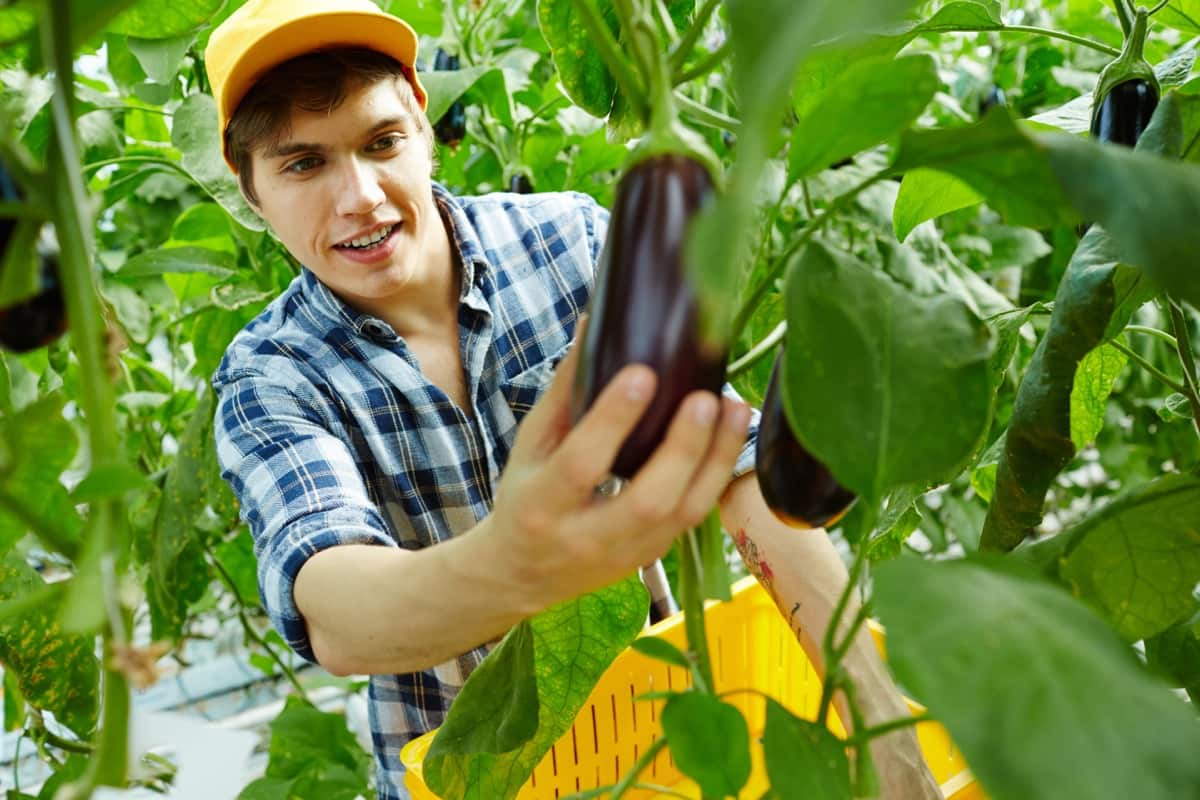
Steps to Create Greenhouse Business Plan in West Bengal
- It is important to research the climate and soil conditions in the region to determine what type of plants will be able to grow successfully.
- Next, obtaining the necessary permits and licenses from the government is necessary to operate a greenhouse farm.
- Create a financial plan including start-up costs, operating expenses, and revenue projections. Make sure to include contingency plans in case of unexpected expenses or lower-than-expected sales.
- Once you have all the information gathered, it’s time to combine it into a clear and concise document. Be sure to proofread and edit before finalizing.
- When choosing the right crop to grow, consider what crops are popular in your region and what will do well in a controlled environment. Make sure also to research the specific needs of each crop to ensure they will thrive in your greenhouse.
- The climate conditions in your region will play a role in how successful your greenhouse crop will be. If you live in a region with high humidity, you’ll need to take measures to control the humidity levels in your greenhouse. Likewise, if you experience extreme temperature changes throughout the year, you must ensure your greenhouse can accommodate those changes.
- The size and layout of your greenhouse will impact how successful your crops will be. Choose a size and layout that allows proper crop ventilation and lighting.
- It is important to have a clear and concise business plan. This plan should include your objectives and goals for the business, as well as a detailed financial analysis. Securing funding and moving forward with your venture will be difficult without a solid plan.
- It is important to choose the right location for your greenhouse farm. The climate in West Bengal is ideal for year-round cultivation, so you will want to find a spot that receives plenty of sunlight and has access to water. Once you have selected a site, you must obtain the proper permits and licenses from the local government.
- Once your paperwork is in order, you can begin construction on your greenhouse. Many different designs and materials can be used, so it is important to research before making decisions. Once your greenhouse is built, you must purchase seeds or plants from a nursery. Then, you must set up irrigation and lighting systems inside the greenhouse.
- After running your greenhouse, you must market your business to potential customers. You can set up a website, or social media account for your farm. You can also distribute flyers and brochures in local businesses or farmers’ markets.
Tips for Starting Greenhouse Farming for Beginners in West Bengal
- Make sure you have the right location. The first step is finding a good spot for your greenhouse. You’ll want to consider factors like sunlight, wind exposure, and proximity to water and electrical sources.
- Choose the right type of greenhouse. Different greenhouses are available on the market, so it’s important to research and select the greenhouse system that best suits your needs
- Start small. It’s tempting to start big, but it’s better to start small and gradually expand your operation as you gain experience. This will help you keep costs down and avoid getting overwhelmed.
- Select the plants you want to grow in your greenhouse carefully. Some plants require more care, so ensure you are prepared to give them the necessary attention. Consider what you want to grow and how much space you have before deciding.
- When starting a greenhouse farming operation, it’s important to consider the climate. The type of climate will dictate the type of crops that can be grown, the necessary equipment, and even the type of structure that will be needed.
In case you missed it: Goat Farming In West Bengal- Loans, Subsidies
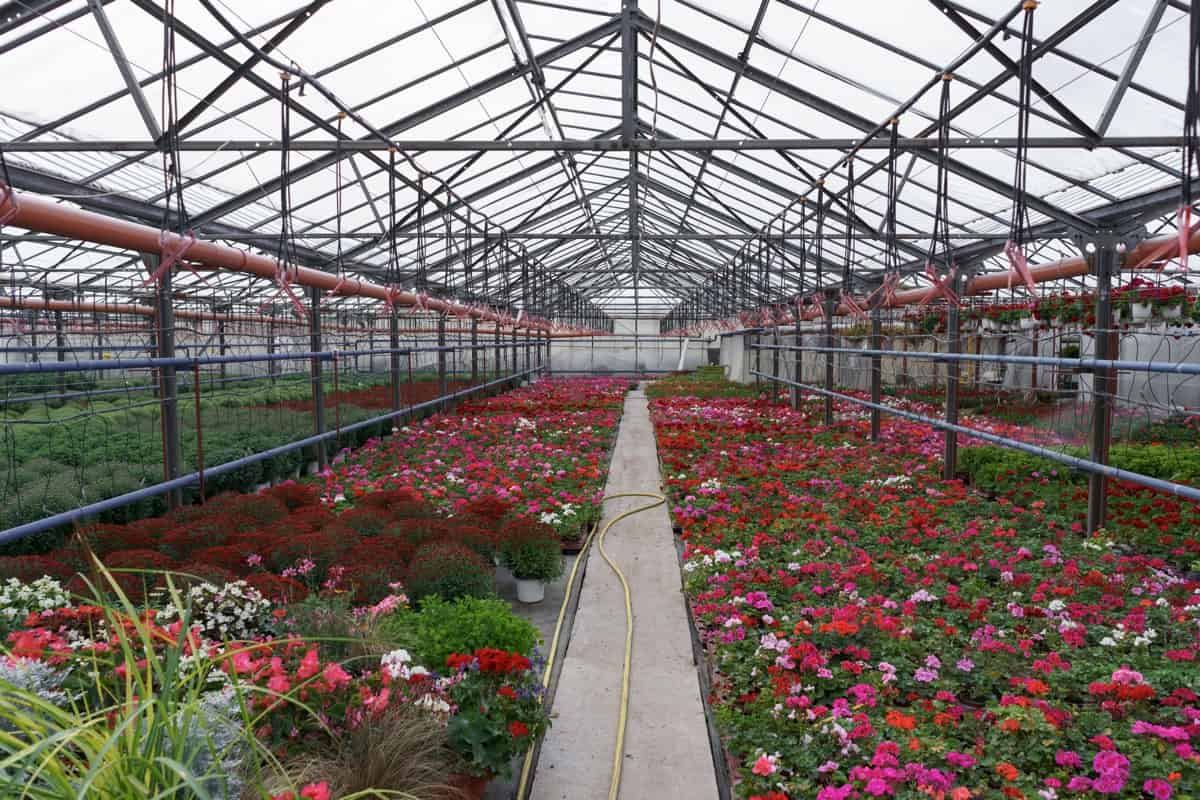
- If you’re in an area with a temperate climate, you’ll have more crop options. However, you’ll need to be aware of the possibility of extreme weather events.
- Investing in an automated system is one key rule when starting a greenhouse farming business. The automated system will help you save time and money by automating tasks such as watering, planting, and monitoring the temperature and humidity levels inside the greenhouse. Many automated systems are on the market, so research them before purchasing.
- Automating some aspects of your greenhouse operation can save you time and money. Many greenhouse automation systems are available, so talk to an expert to find the best option.
Key Rules Greenhouse Farming in West Bengal
- The first step in starting a greenhouse farm is choosing the right location. Look for a place that gets plenty of sunlight and has good drainage.
- The size of the greenhouse should be appropriate for the amount of land available.
- The type of crop grown will dictate the amount of water and fertilizer required.
- It is important to have a reliable source of electricity for operating the greenhouse and its equipment.
- Adequate ventilation and temperature control are essential for keeping plants healthy. The greenhouse must be properly ventilated to prevent heat build-up.
- Once you have chosen the perfect location for your farm, it’s time to gather the necessary supplies. You will need greenhouses, ventilation systems, grow lights, and planting supplies. Be sure to purchase high-quality materials that will last for years.
- The greenhouse plants must be watered regularly and fertilized to promote growth. Pests and diseases should be controlled using effective methods to ensure healthy plants.
- Before starting construction on your farm, creating a comprehensive business plan is important. This document will outline your goals, budget, and marketing strategy. It will also help you secure funding from investors or lenders.
- Once your greenhouses are built, it’s time to start hiring staff. Look for experienced farmers who can help you with running a successful operation. From planting and watering to harvesting and sales, they will be crucial to your success.
Challenges of Greenhouse Farming in West Bengal
The land in West Bengal is mostly cultivable, but the state lacks irrigation facilities. Seventy percent of the total cropped area is rainfed, and only 30% of the net sown area has access to irrigation. As a result, farmers have to rely heavily on rainfall for their crops. This makes farming in West Bengal very vulnerable to climate change. In addition, the high cost of greenhouse construction and lack of subsidies make it difficult for farmers to invest in greenhouse agriculture.
In case you missed it: Dairy Farming In West Bengal, Loans, Subsidy, Schemes
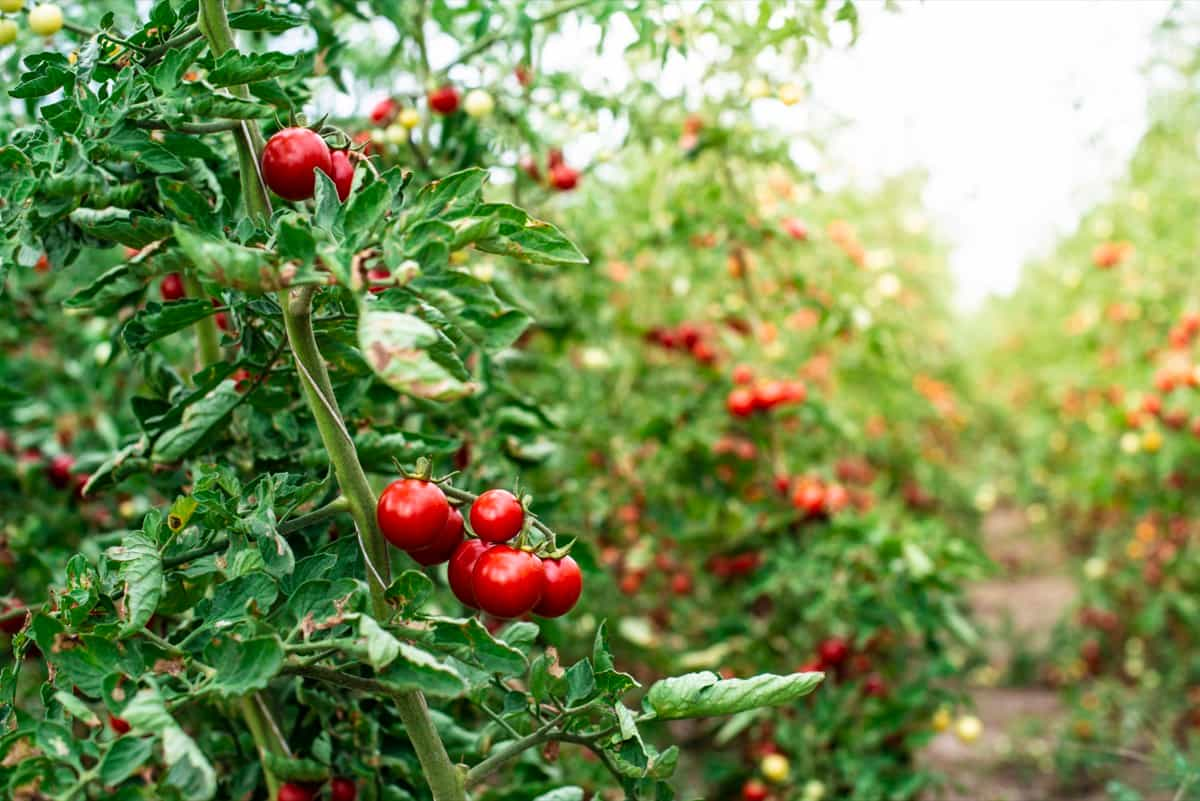
The government provides some greenhouse construction loans, but the interest rates are often too high for small-scale farmers to afford. Despite these challenges, many farmers in West Bengal are successfully using greenhouses to grow various crops, including Tomatoes, Cucumbers, Peppers, and flowers. With proper investment and support from the government, greenhouse farming has great potential to improve the livelihoods of small-scale farmers in West Bengal.
Conclusion
Greenhouse farming is becoming increasingly popular for many reasons – from increased crop yield to plant growth and protection against pests better. Greenhouse farming in West Bengal is a profitable business. In West Bengal, greenhouse farming is becoming an increasingly popular option for farmers looking to improve their yield and profits.
- Types of Pesticides Used in Agriculture: A Beginner’s Guide
- Economical Aquaculture: A Guide to Low-Budget Fish Farming
- 15 Common Planting Errors That Can Doom Your Fruit Trees
- How to Make Houseplants Bushy: Effective Tips and Ideas
- Innovative Strategies for Boosting Coconut Pollination and Yield
- Pollination Strategies for Maximum Pumpkin Yield
- The Complete Guide to Chicken Fattening: Strategies for Maximum Growth
- Natural Solutions for Tulip Problems: 100% Effective Remedies for Leaf and Bulb-Related Issues
- Revolutionizing Citrus Preservation: Towards a Healthier, Greener Future
- Natural Solutions for Peony Leaf and Flower Problems: 100% Effective Remedies
- Maximizing Profits with Avocado Contract Farming in India: A Comprehensive Guide
- Natural Solutions for Hydrangea Problems: 100% Effective Remedies for Leaf and Flowers
- The Ultimate Guide to Choosing the Perfect Foliage Friend: Bringing Life Indoors
- From Sunlight to Sustainability: 15 Ways to Use Solar Technology in Agriculture
- The Ultimate Guide to Dong Tao Chicken: Exploring from History to Raising
- The Eco-Friendly Makeover: How to Convert Your Unused Swimming Pool into a Fish Pond
- Mastering the Art of Delaware Chicken Farming: Essentials for Healthy Backyard Flocks
- 20 Best Homemade Fertilizers for Money Plant: DIY Recipes and Application Methods
- How to Craft a Comprehensive Free-Range Chicken Farming Business Plan
- Brighten Your Flock: Raising Easter Egger Chickens for Beauty and Bounty
- How to Optimize Your Poultry Egg Farm Business Plan with These Strategies
- Subsidy for Spirulina Cultivation: How Indian Government Schemes Encouraging Spirulina Farmers
- Ultimate Guide to Raising Dominique Chickens: Breeding, Feeding, Egg-Production, and Care
- Mastering the Art of Raising Jersey Giant Chickens: Care, Feeding, and More
- Ultimate Guide to Raising Legbar Chickens: Breeding, Farming Practices, Diet, Egg-Production
- How to Raise Welsummer Chickens: A Comprehensive Guide for Beginners
- How to Protect Indoor Plants in Winter: A Comprehensive Guide
- Ultimate Guide to Grow Bag Gardening: Tips, Tricks, and Planting Ideas for Urban Gardeners
- Guide to Lotus Cultivation: How to Propagate, Plant, Grow, Care, Cost, and Profit
- Agriculture Drone Subsidy Scheme: Government Kisan Subsidy, License, and How to Apply Online
- Ultimate Guide to Raising Araucana Chickens: Breed Profile, Farming Economics, Diet, and Care
- Bringing Hydroponics to Classroom: Importance, Benefits of Learning for School Students
- Ultimate Guide to Raising Polish Chickens: Breed Profile, Farming Economics, Diet, and Care
- Ultimate Guide to Raising Australorp Chickens: Profile, Farming Economics, Egg Production, Diet, and Care
- Silkie Chicken Farming: Raising Practices, Varieties, Egg Production, Diet, and Care
- Sussex Chicken Farming: Raising Practices, Varieties, Egg Production, Diet and Care